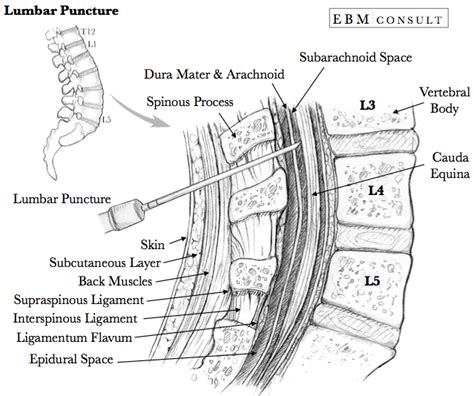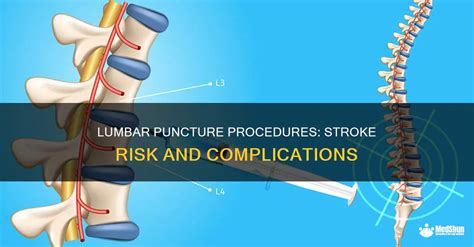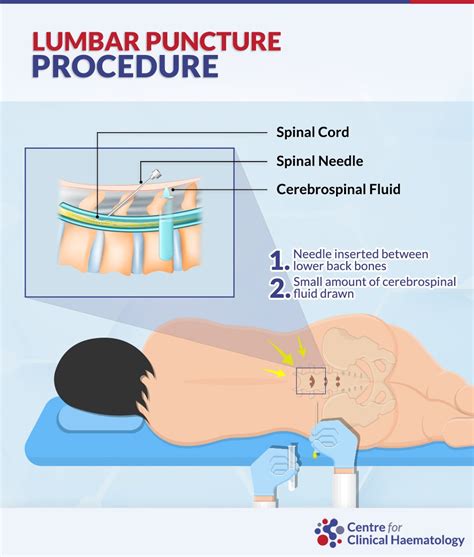Intro
Discover the Lumbar Puncture Procedure, a diagnostic test using spinal tap, cerebrospinal fluid analysis, and medical imaging to diagnose neurological disorders, meningitis, and spinal issues with precision and accuracy.
The lumbar puncture procedure, also known as a spinal tap, is a medical intervention that has been used for decades to diagnose and treat various conditions affecting the central nervous system. This procedure involves the insertion of a needle between two lumbar vertebrae to collect cerebrospinal fluid, which surrounds the brain and spinal cord. The collected fluid can provide valuable information about the presence of infections, inflammation, or other abnormalities in the central nervous system. In this article, we will delve into the details of the lumbar puncture procedure, its benefits, and its potential risks.
The importance of the lumbar puncture procedure cannot be overstated, as it has revolutionized the diagnosis and treatment of numerous neurological conditions. By analyzing the cerebrospinal fluid, medical professionals can identify conditions such as meningitis, multiple sclerosis, and subarachnoid hemorrhage, among others. Moreover, the procedure can also be used to administer medications directly into the spinal canal, providing targeted treatment for conditions such as spasticity and chronic pain.
The lumbar puncture procedure has undergone significant advancements in recent years, with improvements in technique and technology reducing the risk of complications and improving patient outcomes. However, despite its importance and benefits, the procedure is not without risks, and patients should be fully informed about the potential complications and side effects. In this article, we will provide a comprehensive overview of the lumbar puncture procedure, including its indications, benefits, and potential risks, as well as the steps involved in the procedure and the post-procedure care.
Lumbar Puncture Procedure Overview

Preparation and Positioning
The preparation and positioning of the patient are crucial steps in the lumbar puncture procedure. The patient is typically asked to lie on their side, with their knees drawn up towards their chest and their head flexed towards their chest. This position helps to widen the space between the lumbar vertebrae, making it easier to insert the needle. The skin is then cleaned and disinfected, and a local anesthetic is administered to numb the area. The medical professional will then use a sterile needle and insert it between the lumbar vertebrae, typically between the L3 and L4 or L4 and L5 vertebrae.Benefits of Lumbar Puncture Procedure

Diagnosis and Treatment
The lumbar puncture procedure can be used to diagnose and treat various conditions affecting the central nervous system. The procedure involves the collection of cerebrospinal fluid, which can provide valuable information about the presence of infections, inflammation, or other abnormalities. The fluid can be analyzed for various parameters, including protein levels, glucose levels, and white blood cell count. The procedure can also be used to administer medications directly into the spinal canal, providing targeted treatment for conditions such as spasticity and chronic pain.Risks and Complications of Lumbar Puncture Procedure

Post-Procedure Care
After the lumbar puncture procedure, the patient is typically monitored for several hours to check for any complications. The patient is advised to rest for several hours and to avoid heavy lifting, bending, or strenuous activities. The patient is also advised to drink plenty of fluids to help replace the cerebrospinal fluid that was removed during the procedure. The patient may experience some discomfort or pain at the injection site, which can be treated with over-the-counter pain medications.Steps Involved in Lumbar Puncture Procedure

Insertion of the Needle
The insertion of the needle is a crucial step in the lumbar puncture procedure. The needle is typically inserted between the L3 and L4 or L4 and L5 vertebrae, and the medical professional will use a sterile needle and a collection tube to collect the cerebrospinal fluid. The needle is inserted slowly and carefully, and the medical professional will use a local anesthetic to numb the area and reduce discomfort.Indications for Lumbar Puncture Procedure

- Diagnosis of neurological conditions
- Administration of medications
- Relief of pressure in the spinal canal
- Collection of cerebrospinal fluid for laboratory analysis
Contraindications for Lumbar Puncture Procedure
The lumbar puncture procedure is contraindicated in certain situations, including increased intracranial pressure, space-occupying lesions, and bleeding disorders. The procedure is also contraindicated in patients who are taking anticoagulant medications or who have a history of bleeding disorders. The medical professional will assess the patient's condition and medical history before performing the procedure to determine if it is safe to proceed.What is the purpose of the lumbar puncture procedure?
+The purpose of the lumbar puncture procedure is to collect cerebrospinal fluid for laboratory analysis, administer medications directly into the spinal canal, and relieve pressure in the spinal canal.
What are the risks and complications of the lumbar puncture procedure?
+The risks and complications of the lumbar puncture procedure include headache, back pain, and nerve damage. The headache is usually mild and can be treated with over-the-counter pain medications. However, in some cases, the headache can be severe and may require further treatment.
What are the indications for the lumbar puncture procedure?
+The indications for the lumbar puncture procedure include diagnosis of neurological conditions, administration of medications, relief of pressure in the spinal canal, and collection of cerebrospinal fluid for laboratory analysis.
In conclusion, the lumbar puncture procedure is a valuable medical intervention that has been used for decades to diagnose and treat various conditions affecting the central nervous system. While the procedure is generally safe, it is not without risks and complications, and patients should be fully informed about the potential risks and benefits. By understanding the procedure, its benefits, and its potential risks, patients can make informed decisions about their care and treatment. We encourage readers to share their experiences and ask questions about the lumbar puncture procedure, and we invite medical professionals to provide their insights and expertise on the topic.
